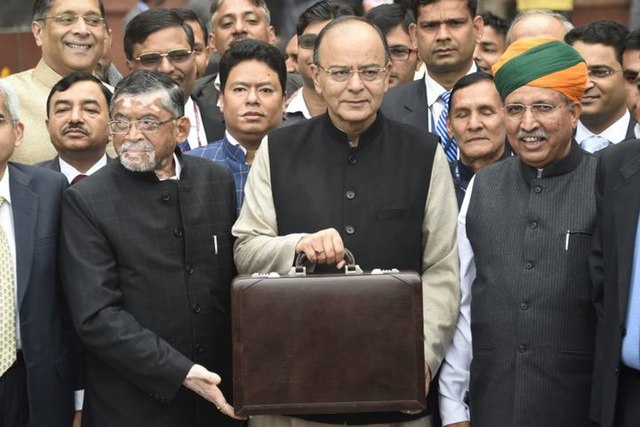New Delhi: Finance Minister Arun Jaitley delivered the current government’s fifth and last full financial budget (Budget 2018 for the fiscal year 2018-19) amid subdued economic growth, challenging fiscal situation and farm distress.
While a budget covers a plethora of items and heads, the mix can leave a lot of people confused. This budget is rendered all the more important as there are elections coming up in eight states this year and the Lok Sabha election next year, all of which put tough demands on the Finance Minister.
India is the world’s fastest-growing economy, said the Finance Minister as he announced the Budget. He lauded the govt’s moves to contain black money and encourage tax formalisation. Batting for GST, he said it ensured tax simplicity, demonetisation paved the way for a digital economy.
“When the Narendra Modi government took over, India was considered to be one of the fragile five economies of the world. Our government reversed the trend,” Jaitley said.
Continue Reading →

Perhaps the biggest plus of this budget is that it brought no negative shocks. And no bad ideas like farm loan waivers.
Hence the massive relief rally on Dalal Street. And the economists are relieved that foolish ideas have been given the go-by.
Arun Jaitley’s Union Budget for fiscal 2017-18, his fourth, is notable precisely for its lack of fireworks. Given the context of demonetisation and the need to stimulate growth, the budget did not propose major concession to too many sectors, barring real estate. In fact, Jaitley passed up the opportunity provided by DeMo and a forthcoming shift to a goods and services tax (GST) regime to break out of the fiscal deficit straitjacket. He accepted the 3 per cent target for 2017-18 as one he will try to achieve while giving himself leeway up to 3.2 per cent, which is lower than 2016-17’s target of 3.5 per cent. The direction of fiscal consolidation is consistent and prudent.
Continue Reading →
The Sensex continued to struggle around the 28,000 mark to finish lower on Friday even as benchmark indices gained on the week. The weakness in Indian equities was in line with the subdued mood in Asian markets.
The Sensex closed at 28,051.86, down 156.76 points over its previous close, and the Nifty shed 27.80 points to close at 8,638.50.
For the week, the Sensex rose 0.9 percent, and the Nifty by 1.1 percent.
About 1221 shares have advanced, 1462 shares declined, and 209 shares are unchanged.
- Nifty 50 closed at 8638.5 with 0.3% loss today. 24 stocks advanced whereas 26 stocks declined and 1 stocks unchanged
- With 6.6% increase EICHERMOT was the top gainer in Nifty. ADANIPORTS, ZEEL increased 3.3% and 2.9% respectively
- ICICIBANK with a loss of 3.6% was the biggest loser in the Nifty. BHARTIARTL , BHEL lost 2.8% and 2.4% respectively
- FIIs bought net 84.6 crores worth of index futures and bought net 1392.9 crores worth of index options
- FIIs sold net 865.8 crores worth of stock futures and bought net 7.2 crores worth of stock options
- Daily volume in ICICIBANK surged 116%, highest growth among NSE stocks
Continue Reading →







